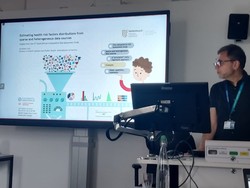I have been involved in the Second South African Comparative Risk Assessment Study. I worked with colleagues at the SAMRC Burden of Disease Research Unit in defining modelling approaches across the different risk factors, and I have led the development and application of a series of meta-regression models for the estimation of trends in alcohol consumption, blood pressure, fasting plasma glucose and BMI. I led the sub-study on burden associated with low fruit and vegetable consumption, and produced the relative exposure estimates from survey microdata.
The study – funded by the South African Medical Research Council’s Flagships Awards Project (SAMRC-RFA-IFSP-01-2013/SA CRA 2) – used the comparative risk assessment (CRA) approach to estimate the attributable burden of 18 risk factors.
Risk exposure estimates were sourced from local data, and meta-regressions were used to model the parameters, depending on the availability of data. Risk-outcome pairs meeting the criteria for convincing or probable evidence were assessed using relative risks against a theoretical minimum risk exposure level to calculate either a potential impact fraction or population attributable fraction (PAF). Relative risks were sourced from the Global Burden of Disease, Injuries, and Risk Factors (GBD) study as well as published cohort and intervention studies. Attributable burden was calculated for each risk factor for 2000, 2006 and 2012 by applying the PAF to estimates of deaths and years of life lost from the Second South African National Burden of Disease Study (SANBD2). Uncertainty analyses were performed using Monte Carlo simulation, and age-standardised rates were calculated using the World Health Organization standard population.
More information:


